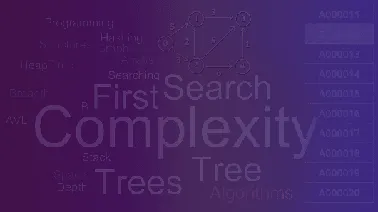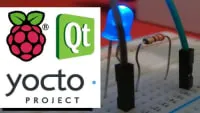
Communications and High-Speed Signals with Raspberry Pi 
This course explores the physical layer of communication and how to troubleshoot high-speed signals using Raspberry Pi. Students will learn how to design projects to ensure successful communication between elements. ▼
ADVERTISEMENT
Course Feature
![]() Cost:
Cost:
Free
![]() Provider:
Provider:
Coursera
![]() Certificate:
Certificate:
Paid Certification
![]() Language:
Language:
English
![]() Start Date:
Start Date:
29th May, 2023
Course Overview
❗The content presented here is sourced directly from Coursera platform. For comprehensive course details, including enrollment information, simply click on the 'Go to class' link on our website.
Updated in [March 06th, 2023]
This course, Communications and High-Speed Signals with Raspberry Pi, provides an overview of common signal protocols, the physics of high-frequency signals, and the five rules of thumb for designing circuits. Participants will gain an understanding of how circuits send and receive signals, how to troubleshoot high-speed signals, and how to design projects so they work. The course is designed for those who are interested in learning more about signal integrity concepts and how to apply them to Raspberry Pi projects.
[Applications]
This course provides a comprehensive overview of communications and high-speed signals with Raspberry Pi. It reviews common signal protocols, explores the physics of high-frequency signals, examines the frequency components of signals, and develops five rules of thumb for designing circuits. With this knowledge, participants can apply it to troubleshoot high-speed signals and design projects that work the first time.
[Career Paths]
1. Embedded Systems Engineer: Embedded systems engineers are responsible for designing, developing, and testing embedded systems, which are computer systems that are embedded into larger systems. They must have a strong understanding of hardware and software, as well as the ability to troubleshoot and debug complex systems. As the demand for connected devices increases, the need for embedded systems engineers is expected to grow.
2. Robotics Engineer: Robotics engineers are responsible for designing, developing, and testing robots and robotic systems. They must have a strong understanding of hardware and software, as well as the ability to troubleshoot and debug complex systems. As the demand for robots increases, the need for robotics engineers is expected to grow.
3. Network Engineer: Network engineers are responsible for designing, developing, and maintaining computer networks. They must have a strong understanding of hardware and software, as well as the ability to troubleshoot and debug complex systems. As the demand for connected devices increases, the need for network engineers is expected to grow.
4. IoT Engineer: IoT engineers are responsible for designing, developing, and maintaining Internet of Things (IoT) systems. They must have a strong understanding of hardware and software, as well as the ability to troubleshoot and debug complex systems. As the demand for connected devices increases, the need for IoT engineers is expected to grow.
[Education Paths]
1. Electrical Engineering Degree: Electrical engineering is a field of engineering that deals with the study and application of electricity, electronics, and electromagnetism. This degree path focuses on the design, development, and implementation of electrical systems and components. It is a rapidly growing field, with new technologies and applications being developed every day. Developing trends in this field include the use of artificial intelligence, robotics, and the Internet of Things (IoT).
2. Computer Engineering Degree: Computer engineering is a field of engineering that combines the principles of electrical engineering and computer science. This degree path focuses on the design, development, and implementation of computer systems and components. It is a rapidly growing field, with new technologies and applications being developed every day. Developing trends in this field include the use of artificial intelligence, robotics, and the Internet of Things (IoT).
3. Telecommunications Engineering Degree: Telecommunications engineering is a field of engineering that deals with the study and application of telecommunications systems and components. This degree path focuses on the design, development, and implementation of telecommunications systems and components. It is a rapidly growing field, with new technologies and applications being developed every day. Developing trends in this field include the use of artificial intelligence, robotics, and the Internet of Things (IoT).
4. Network Engineering Degree: Network engineering is a field of engineering that deals with the study and application of computer networks and components. This degree path focuses on the design, development, and implementation of computer networks and components. It is a rapidly growing field, with new technologies and applications being developed every day. Developing trends in this field include the use of artificial intelligence, robotics, and the Internet of Things (IoT).
Pros & Cons

Comprehensive coverage of communications and high speed signals

Hands on experience with Raspberry Pi

Limited to Raspberry Pi platform

May be too technical for some users
Course Provider

Provider Coursera's Stats at AZClass
Discussion and Reviews
0.0 (Based on 0 reviews)
Explore Similar Online Courses

Algorithms
![JavaScript for ABSOLUTE beginners! [April 2020 Edition]](/ccsimg/dcs/img_tools/dcs_img_1692147456_f865c8d6a773c37776ff0d504158a20f.webp)
JavaScript for ABSOLUTE beginners! [April 2020 Edition]

Python for Informatics: Exploring Information

Social Network Analysis

Introduction to Systematic Review and Meta-Analysis

The Analytics Edge

DCO042 - Python For Informatics

Causal Diagrams: Draw Your Assumptions Before Your Conclusions

Whole genome sequencing of bacterial genomes - tools and applications

Powering your Home Projects with Raspberry Pi

Creative Audio Programming on the Raspberry Pi


Start your review of Communications and High-Speed Signals with Raspberry Pi